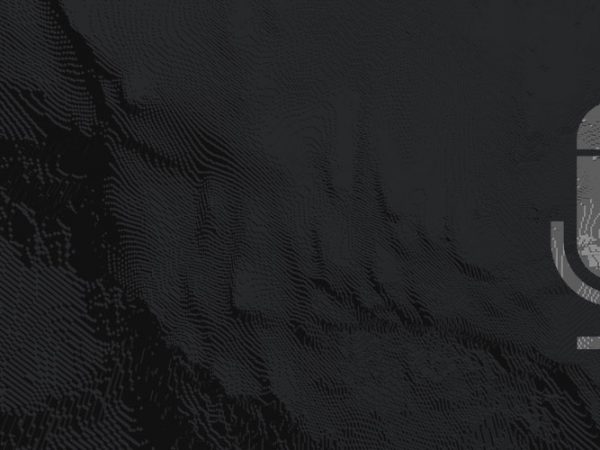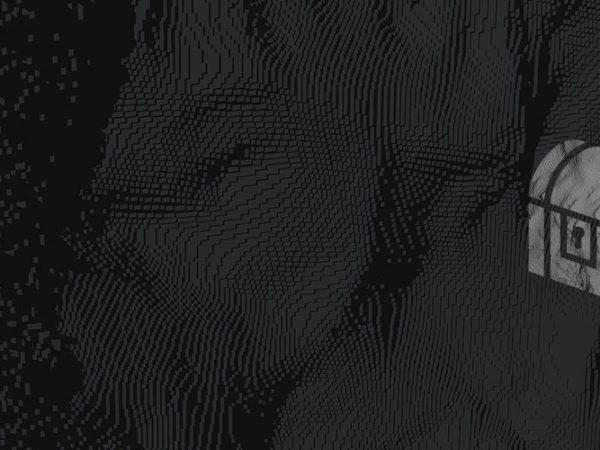Upgrading to a DSLR or mirrorless camera is one of the most straightforward changes you can make to improve the quality of your stream, but it’s not the last step. It’s often worlds better than using a webcam, but you may still have the feeling that there’s something better waiting for you.
Maybe you’ve realized that the kit lens included with your initial purchase isn’t the best option out there, or maybe you bought the camera body understanding that you would need a different lens.
Either way, finding the best streaming lens for your camera is the next step in piecing together the puzzle of a premium quality streaming setup.
Before we dive into the dizzying amount of options out there, here are two of our favorite lenses for popular Canon and Sony cameras.
Best Canon Lens for Streaming
Sigma 30mm
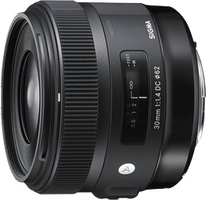
Canon users may already be familiar with Sigma’s 30mm lens. While it isn’t without its faults for streaming, this remains one of the most versatile and artistic lenses you can work with on a Canon.
Mastering this lens allows you to create a personal experience for your audience without sacrificing quality in low-light situations.
Best Sony Lens for Streaming
Sigma 16mm
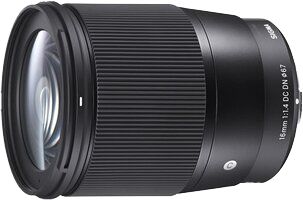
Sony cameras can get a similar feel from Sigma’s 16mm lens for Sony E mounts.
This is another artistic option well-suited for setting your stream apart from everyone else, and the lens doesn’t run into as many issues as others at this focal length.
Best Streaming Lenses
We’ve categorized the lenses into prime and zoom lenses for your convenience.
Each of the two sections will list out the most popular focal lengths and their respective lenses that are best suited for streamers.
Prime Lenses
Prime lenses are a bit more straightforward than their zooming cousins. They sit at a single focal length, limiting your options but also providing less room for confusion and mechanical issues.
You can identify a prime lens by its single focal length.
50mm Lens
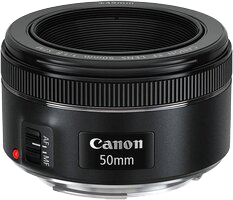 A standard 50mm lens will provide the most cinematic experience of any on this list, and it can be pretty flattering.
A standard 50mm lens will provide the most cinematic experience of any on this list, and it can be pretty flattering.
As it has the longest focal length, these lenses appear the most “zoomed in” and allow you to keep the camera out of your face.
A 50mm lens comprises the frame enough to provide tasteful distortion, but it won’t cut the background out completely.
Canon users can take advantage of the Canon EF 50mm f/1.8 lens for streaming. Its wide f/1.8 aperture allows as much as 8 times the light a standard zoom lens would allow, and you can create an intimate shot for streaming with this focal length.
Pros:
- Cinematic appearance
- Most flattering for your face
- Still allow background in image
Cons:
- May not allow as much background as you like
- Sit farther back; may need to project if mic is at the same position
35mm Lens
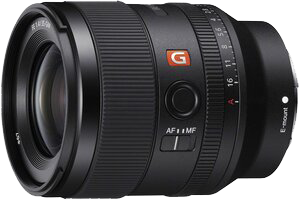 Your 35mm lenses are often a great compromise to retain closeness without sitting too close.
Your 35mm lenses are often a great compromise to retain closeness without sitting too close.
This focal length feels the most personal, and it’s commonly used for interviews to enhance the feeling of conversation.
A 35mm lens needs to sit pretty close, but it doesn’t go over the top with cinematic quality. Many prefer this for their streaming DSLR to a 50mm lens because it has a more authentic or down-to-earth feeling.
You experience all the benefits of the compact wide lens with the Sony FE 35mm f/1.4. As another wide aperture option, Sony camera owners get plenty of brightness and depth of field to create a cozy connection with their viewers.
Pros:
- Covers the middle ground between wide and standard shots
- More authentic feel
- Wide shot without distortions
Cons:
- Not as flattering on human faces at 50mm
- Better suited for full-body shots
30mm Lens
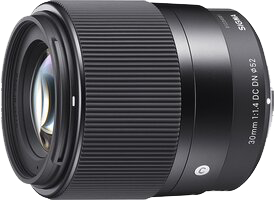 A 30mm lens isn’t as common for portraiture, and it’s not at the top of the mind with options for streaming.
A 30mm lens isn’t as common for portraiture, and it’s not at the top of the mind with options for streaming.
You won’t get much distortion with this focal length, but its following often involves landscape photography.
These lenses allow more content in your background, but they also tend to have a vignette effect. This is a pleasant effect when you want it, but it can create quality issues when you’re streaming. Photographers address this in the editing process, but you won’t have the chance when live.
Sigma’s 30mm f/1.4 lens is one of the most popular at this focal length. It creates incredibly immersive shots while hosting a large aperture perfect for low-light conditions and background blurring.
Pros:
- Limited distortion for wide angle
- Allow more background in image for homey feel
Cons:
- Can end up with vignette effect (may be a pro for the right person)
- Where distortion starts on the face
24mm Lens
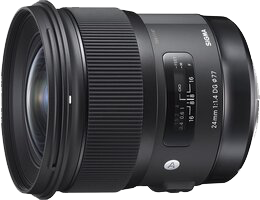 A 24mm lens is another abstract option that either works really well for what you want or veers completely off course.
A 24mm lens is another abstract option that either works really well for what you want or veers completely off course.
They’re more commonly used for landscape photography and environmental scenes because they risk making your face look bigger.
These lenses are great for providing a wide angle view without an unnatural feel, but you need to experiment with them to get the right angle for live streaming.
Despite the obstacles you face with this focal length, the Sigma 24mm f/1.4 is the perfect choice for an artistic shot that can make your brand.
There is only so much you can do to separate yourself from other streamers who are also focusing on their face, but this Canon lens makes it easy to use interesting angles with little distortion.
Pros:
- Great for artistic shots
- Great size for travel
- Sets the scene well
Cons:
- Makes face larger
- Need to sit closer
16mm Lens
 A 16mm lens is the widest angle that works well for streaming. It’s difficult to use in certain spaces, and it requires some clever positioning to combat distortion.
A 16mm lens is the widest angle that works well for streaming. It’s difficult to use in certain spaces, and it requires some clever positioning to combat distortion.
You’ll always be in the frame and can end up with an intimate appeal, but this lens requires more attention than others.
Many YouTubers use this for streaming because of the novel appearance, but it’s not something you see often in television or movies. It’s not a flattering angle to work with, and you need to be close to the lens to prevent losing yourself in the background.
While using a 16mm lens is doable for profile shots, it’s better suited for situations where you can edit your clips. It’s easy to lose track of the distortion and end up with some pretty obscure shots.
Sony E-mount cameras get the most out of this focal length with a Sigma 16mm f/1.4 lens. It’s difficult to shop around in this range, but this lens provides sharp images with few distortions and allows plenty of light in for streaming in low-light situations.
Pros:
- Obscure shots work well for branding
- Intimate feel when placed well
Cons:
- May sit too close for comfort
- Most distortion of any lenses listed
Zoom Lenses
Zoom lenses provide more versatility in terms of focal length, but you’ll toy with them more to determine what works best for you.
They’re usually more expensive than prime lenses because of the more advanced options, but you can save yourself the trouble of buying multiple prime lenses.
Keep in mind that zoom lenses usually have a higher f-number, so their aperture may not open as wide as you want. If you aren’t careful, you’ll end up with a lens ill-suited to low-light conditions such as streaming in a dimly-lit room.
16-35mm Lens
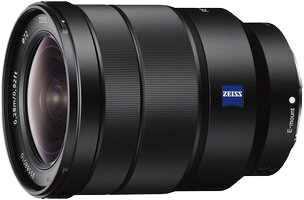 A 16-35mm zoom lens is a common choice for portraits, and it fits perfectly for streaming situations.
A 16-35mm zoom lens is a common choice for portraits, and it fits perfectly for streaming situations.
You’ll still have the limitations that come with using a wide lens, but this is a great option for those that want to include background alongside their profile.
Staying in the wide-angle range facilitates continuity in your shots while allowing you variation. You aren’t stuck learning the ins-and-outs to perfect wide-angle shots as well as standard, and you can learn how to master these types of shots using a single lens.
It also provides a versatile lens you can take outside of your streaming studio. This Sony 16-35mm zoom lens is a perfect example of how the focal length range works well for providing detail in close-up shots while retaining function for landscape photography and other situations that benefit from the wide angle.
Pros:
- Ability to include background in any of your shots
- Easy to understand your shooting situations
Cons:
- Not as great for headshots
- Limited cinematic appeal
- Only includes wide-angle focal lengths
Sony 16-50mm Lens
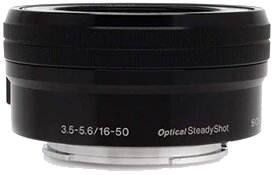 If you want a greater range, the Sony 16-50mm encompasses all the wide-angle and standard lengths we talk about in this article.
If you want a greater range, the Sony 16-50mm encompasses all the wide-angle and standard lengths we talk about in this article.
Anything outside the range is often more trouble than it’s worth for streaming, so this lens unlocks pretty much any shot worth attempting.
The lens allows for 4k recording and autofocuses with speed and silence. It works great for cutting down on bulk, especially if you take your camera with you when out and about.
This lens is a clear example of how a zoom lens dashes your aperture width, and you may have issues in low-light situations.
Pros:
- Greater versatility
Cons:
- Narrow aperture (f/3.5-5.6)
- Only for E-mount cameras
Tokina 11-16mm Lens
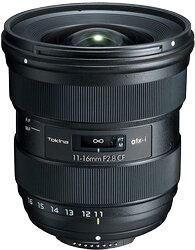 The Tokina 11-16mm lens is compatible with Nikon F mount cameras, but Canon EF mount users have options as well.
The Tokina 11-16mm lens is compatible with Nikon F mount cameras, but Canon EF mount users have options as well.
If you want to focus on ultra-wide shots, this lens can get in more of your background than the prime focal lengths mentioned previously.
Many use it specifically for capturing at an ultra-wide angle because of the lens’s quiet and effective autofocus.
While it has a much more limited zoom range than other options, it allows the lens to capture shots with better sharpness and brightness. It’s an effective zoom option for low-light conditions.
Pros:
- Sharpness and brightness intact
- Provides options in low-light conditions
- Quiet and effective autofocus
Cons:
- Limited to ultra-wide angles
- No compatibility beyond Nikon F and Canon EF mounts
Panasonic Lumix 12-35mm Lens
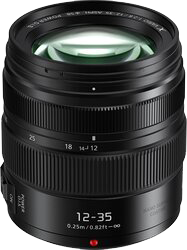 The Panasonic Lumix 12-35mm lens drops lower into the ultra-wide range while holding onto the 35mm focal length that touches on the benefits of a standard shot.
The Panasonic Lumix 12-35mm lens drops lower into the ultra-wide range while holding onto the 35mm focal length that touches on the benefits of a standard shot.
While the aperture is a bit narrow for low-light shooting, it boasts a smoother transition so you aren’t dealing with sudden and loud changes when auto-focusing.
While it doesn’t cover the traditional cinematic range, this lens makes it easy to use bokeh and help you keep focus.
The shallow depth of field works well for streaming interviews, but it’s also a great camera for tapping into the artistic side of wide shots.
Pros:
- Covers wide angle and popular 35mm focal length
- 4K video support
- Great depth of field
Cons:
- Narrow aperture (f/2.8)
- Limited to wide-angle shots
Canon 10-18mm Lens
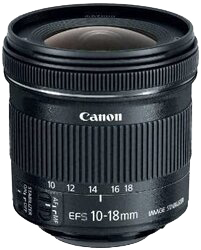 Another option for wide-shot lovers is the Canon EF-S 10-18mm lens. This is a relatively inexpensive zoom lens, but it offers plenty of versatility for crop-sensor cameras.
Another option for wide-shot lovers is the Canon EF-S 10-18mm lens. This is a relatively inexpensive zoom lens, but it offers plenty of versatility for crop-sensor cameras.
It’s better suited for landscape shots or scenarios where lens distortion may play in your favor, but it still encompasses that 16mm focal length that works well for certain streaming situations.
Video quality is the main concern to focus on when setting up your streaming rig, and you don’t sacrifice it for the cost. As long as you have an effective lighting setup, this provides you with options without breaking the bank.
Pros:
- Great video quality in proper lighting
- Quiet autofocus
- Touches both ultrawide and wide shot ranges
Cons:
- Ill-suited for low-light shooting (f/4.5-5.6)
- Design isn’t as robust (i.e. plastic framing)
- You’ll likely stay in the 14mm+ range
Canon 17-40mm Lens
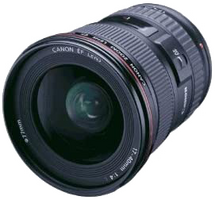 The Canon EF 17-40mm lens covers most of the wider range, and it’s often considered their best wide-angle camera.
The Canon EF 17-40mm lens covers most of the wider range, and it’s often considered their best wide-angle camera.
Like most zoom lenses, it won’t work as well in low-light situations, but you might have some luck attaching it to a full-frame camera.
This lens has a reputation for its durable construction, and it’s perfect if you spend just as much time outside as you do streaming. You get sharp imagery in both situations, and the lens is great for dramatic shots and setups.
Pros:
- Cost effective option for full-frame sensors
- Dramatic quality
- Rugged and versatile design
Cons:
- Not worth as much for crop sensors
- Not as sharp at edges stopped down to f/4
18-55mm Kit Lens
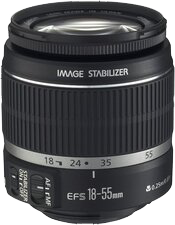 An 18-55mm lens provides you range with the prime lenses listed above. This is a great option if you just can’t decide, as it prevents you from buying lenses at each focal length.
An 18-55mm lens provides you range with the prime lenses listed above. This is a great option if you just can’t decide, as it prevents you from buying lenses at each focal length.
This kit lens from Canon is a prime example of how this can play in your favor. It comes at a fantastic price and Canon often throws it in with new camera bundles because everyone loves it so much.
You lose nothing on sharpness and can stream in a range that works comfortably for your audience.
While the aperture is not as great as you get with a prime lens, f/3.5-5.6 is not as poor as some of the other zoom options.
Pros:
- Covers the most comfortable range for your streaming audience
- Range limited enough to retain sharpness and keep quiet autofocus
- Kit lenses are often budget friendly
Cons:
- Still stuck to narrow aperture ranges
Things to Consider When Buying a Lens for Streaming
Choosing a lens is a bit less straight forward than picking out a streaming webcam.
As much as we wish you could just snag a DSLR lens for streaming off this list and walk away happy, there are a few things to consider so you can make the best decision.
Ensuring compatibility is the first step in choosing a lens, but you also need to look at your low-light needs, which focal length facilitates your desired shots, and whether the stylistic background blur is important for you.
Correct Mount for Your Camera
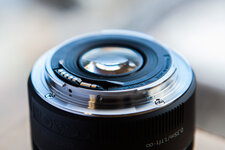
Image: bhphotovideo.com
The first thing you want to do when looking at a lens is verify whether it is compatible with your camera.
You can find the mount information in your camera manual, usually alongside a list of compatible lenses and other relative mount information, or you can check the lens currently connected to your camera.
A lens should physically lock in place, but you also need to ensure it has the proper electronic contacts to allow communication between the lens and camera. This was not a big deal in the past, but automatic metering and autofocus often rely on the collaboration of interfaces.
You may find an adapter to allow you to use a specific lens for your camera, but these usually lack the intelligence you need for key features you want to utilize in your stream.
Low Light Performance
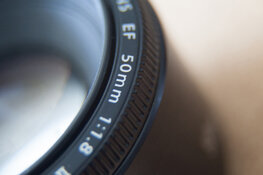
Image: digital-photography-school.com
Odds are you won’t be streaming outside in full light, and you need a lens that works well to discern details in an indoor environment. While most lenses offer decent quality in natural lighting, low-light performance is not a guarantee.
While the camera sensor has a bit to do with low-light performance, you have better control over your lens. You can adjust some settings on your camera to improve video quality, but the lens controls certain physical limits.
If this is important to you, look for a wider aperture (many recommend f/1.8). This allows more light to pass through the lens. You can also recruit the help of artificial lighting sources, but you may not want that much light shining right on you while streaming.
Focal Length
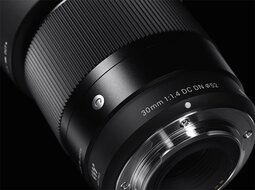
Image: Amazon
Focal length refers to the distance light travels from the optical center of your lens to the camera sensor. This is the “mm” measurement that is easy to spot when shopping for lenses and looking at your lens barrel.
Prime lenses have a single focal length to note. A shorter focal length indicates a more zoomed out picture, while a higher focal length is more zoomed in.
Zoom lenses allow you to change your focal length, and they’re great for minimizing your camera accessories. You’ll see two numbers on a zoom lens.
Most of the lenses used for live streaming have a shorter focal length.
Bokeh Effect
Bokeh is a term derived from Japanese that refers to blur in the background of a shot. This effect brings attention to the area you want tastefully.
It’s most commonly used in portrait photography, and it works perfectly for creating a professional appearance when streaming. The quality of the bokeh you get depends on your lens, and it’s important to check on this feature before you decide.
Most fast prime lenses with round blade apertures work well for bokeh, as well as any lens with a reputation for portrait photography. A low f-stop indicates a wide aperture, meaning that more light enters the camera and you have the shallower depth of field needed to create the soft bokeh effect.
So What is the Best Camera Lens for Streaming?
The best lens for streaming is more subjective than other gear decisions, but most streamers benefit from a lens that:
- Is easy to set and forget
- Preserves detail while framing clearly
- Offers the features you want to showcase in your brand
Using a unique lens can help you create your visual brand, but the most fail-proof answer here is a 35mm or 50mm prime lens compatible with your existing DSLR or mirrorless camera.
These offer the most versatility while limiting distortion, and they work nicely for capturing your emotion during a stream.

